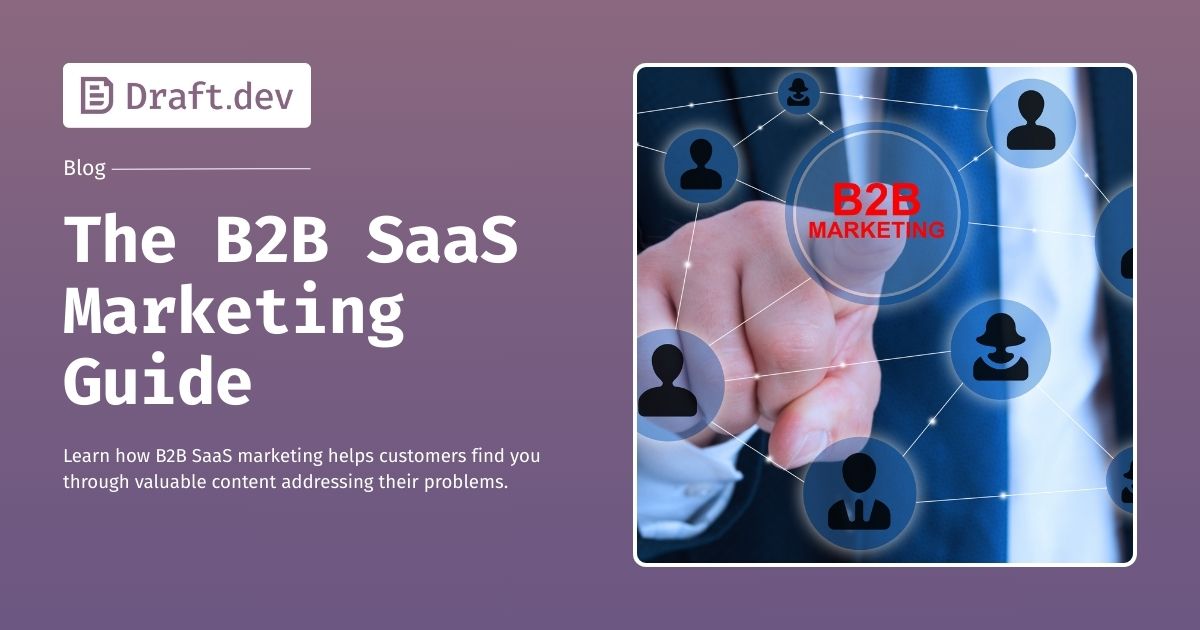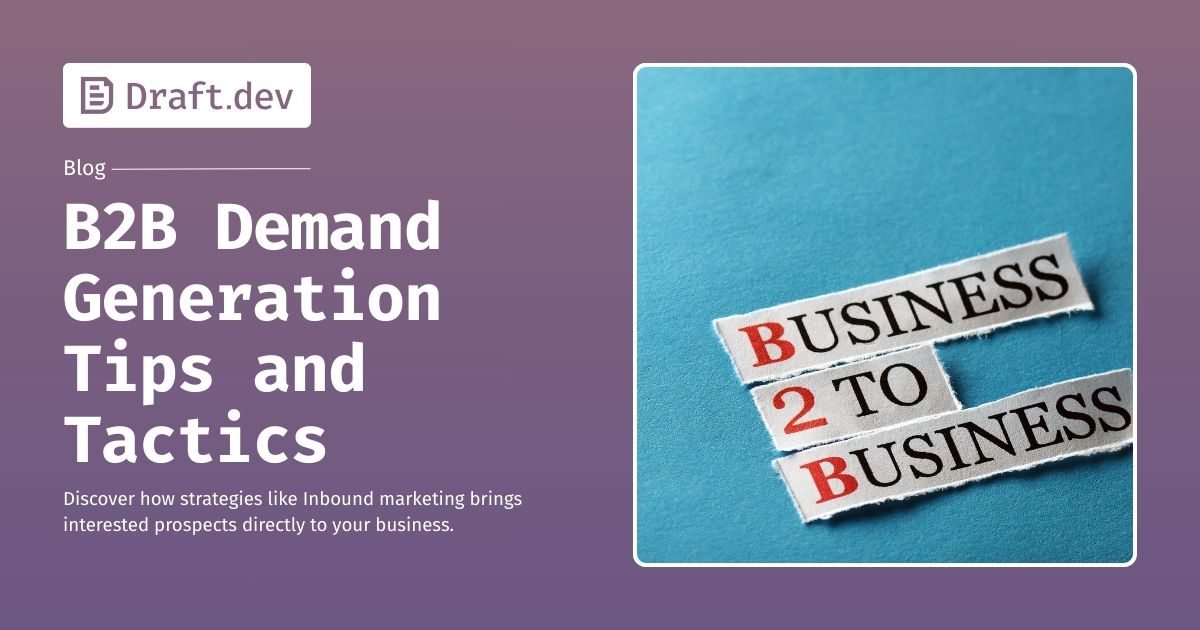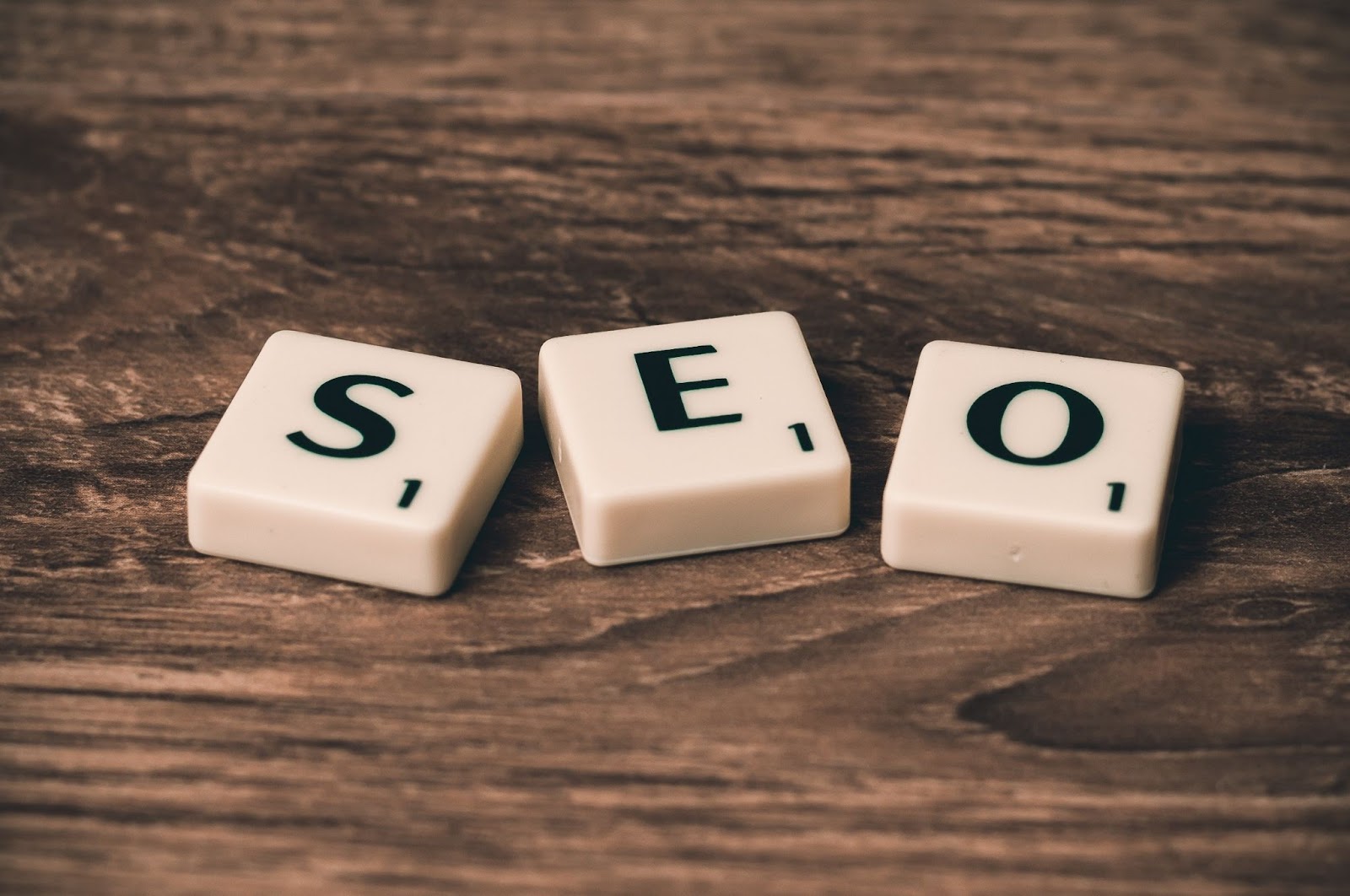Category: b2b-marketing
-

Diverse Audiences in Technical Marketing
In this month’s Draft.dev webinar, we explored the complexities of marketing to diverse technical audiences.
-

Breaking Down the Marketing Funnel in B2B
In 1898, businessman and psychologist E. St. Elmo had an idea: what if customers moved toward a purchase decision in a funnel rather than a straight line? This is where the concept of the marketing funnel was born — a foundation marketers would follow for more than 100 years. But the marketing funnel isn’t so…
-

5 Successful B2B Go-to-Market Strategies Explained
Any business can be based on a great idea, but only a few are ever based on a great strategy. The numbers don’t lie: more than 90% of startups will fail on the open market. Almost 10% close their doors within the first year. And while there are countless reasons why a business might crumble,…
-

The B2B SaaS Marketing Guide
Learn how B2B SaaS marketing helps customers find you through valuable content addressing their problems.
-

B2B Demand Generation Tips and Tactics
Discover how strategies like Inbound marketing brings interested prospects directly to your business.
-

Best B2B Content Marketing Agencies by Vertical
When searching for a content marketing agency to jumpstart your business, choosing a service that offers the right blend of experience, technique, and competence will be important. This article will provide a list of agencies in different verticals to help narrow down the search. According to recent statistics, there are over 5,523 digital marketing agencies…
-

Finding a B2B SEO Agency That Works for You
An SEO agency that specializes in B2B can be a big asset for increasing organic traffic. This article will explain how to find an agency that knows your industry and customers to get the best results. A strong digital marketing presence is a powerful way for B2B companies to reach new customers. SEO in particular…